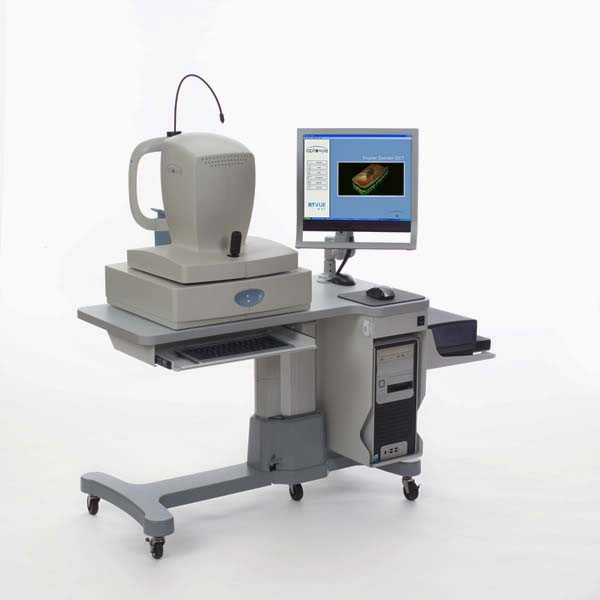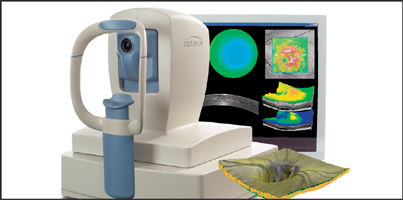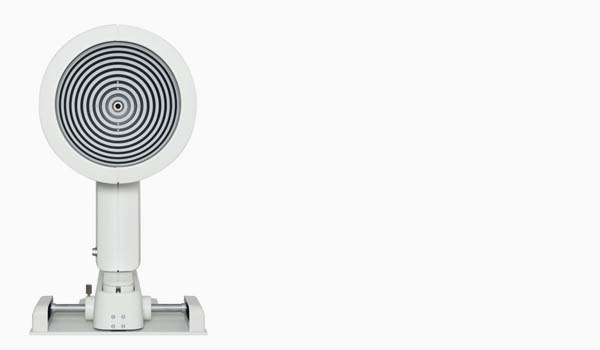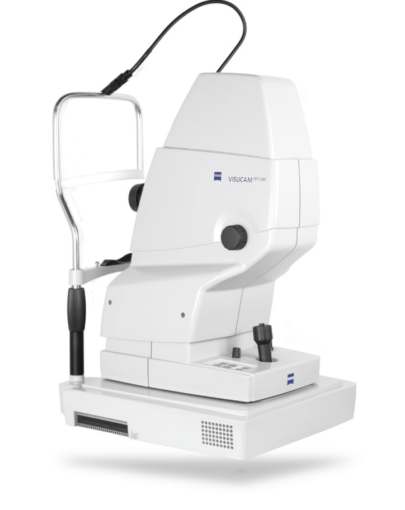Description
The old generation OCT, is based on the Time-Domain OCT technology. In TD-OCT, there is a mechanical moving part, which performs the A-scan, and the information along the longitudinal direction is accumulated over the course of the longitudinal scan time. Due to the nature of the slow mechanical moving speed, the scan time in TD-OCT is very slow. For example, the current commercial retina scanner can only perform 400 A-scans/second. Because of the fast eye motion effect, it is not feasible to use TD-OCT to map the retina tissue. Therefore, it is limited in ocular applications which mostly require high repeatability and high data sampling rate, which must be completed in a fraction of a second.
In Fourier-Domain OCT, the information in an entire A-scan is acquired by a CCD camera simultaneously. The A-scan acquisition rate is only limited by the CCD camera frame transfer rate and the computer calculation time to perform the Fourier transform of the CCD acquired raw data into A-scan information. Due to the fast CCD camera frame transfer rate and fast Fourier transform algorithm, FD-OCT, like RTVue, can perform 26,000 A-scan/second. This is a 65 times speed advancement over current technology.
New Release – Tracking
The Tracking feature for RTVue® provides exquisitely detailed B-scans of up to 16mm length. Capture high quality scans even on patients with fixation and movement issues as well as high myopic patients. Tracking is available now for the RTVue SD-OCT.
New Release – Total Corneal Power
The Total Corneal Power Upgrade is the first FDA cleared SD-OCT based cornea power measurements which directly measures both the anterior and posterior curvatures rather than assuming an anterior/posterior relationship. This methodology, coupled with 5 micron resolution SD-OCT technology, allows evaluation of post refractive patients with increased confidence.
RTVue Overview
RTVue is an ultra-high speed, high resolution OCT retina scanner used for retina imaging and analysis. It is based on the next generation Fourier-Domain Optical Coherence technology just emerging from clinical research in the last two years. The ultra-high speed and high resolution features enable the FD-OCT to visualize the retinal tissue with ultra-high clarity in a fraction of seconds.
Benefits
The founders of Optovue have hands on experience on the development of all three previous and current generations of ophthalmic OCT products. RTVue is designed with the goal to advance the retinal diagnosis for routine clinic use in mind.
RTVue overcomes all Stratus OCT short comings with the following new features:
• Ultra-high speed: 65 time faster (26,000A-scan/s) for 3D and high density mapping
• High Resolution: Twice the resolution (5µm) than Stratus™ OCT
• Scan depth: Up to 2.5mm for imaging the macular and 2.3mm for imaging a tilt disk.
• Two image modes:
o Vitreo mode: for better vitreoretinal tissue image
o Choriod mode: for better chorioretinal tissue image
• High transverse scan resolution:15µm
• Video fundus image: Fundus camera optical design for high quality NIR retina image
• Non-mydriatic imaging: The pupil size required for the fundus image is 3.0mm
• Long working distance: 22mm from cornea to ocular lens







